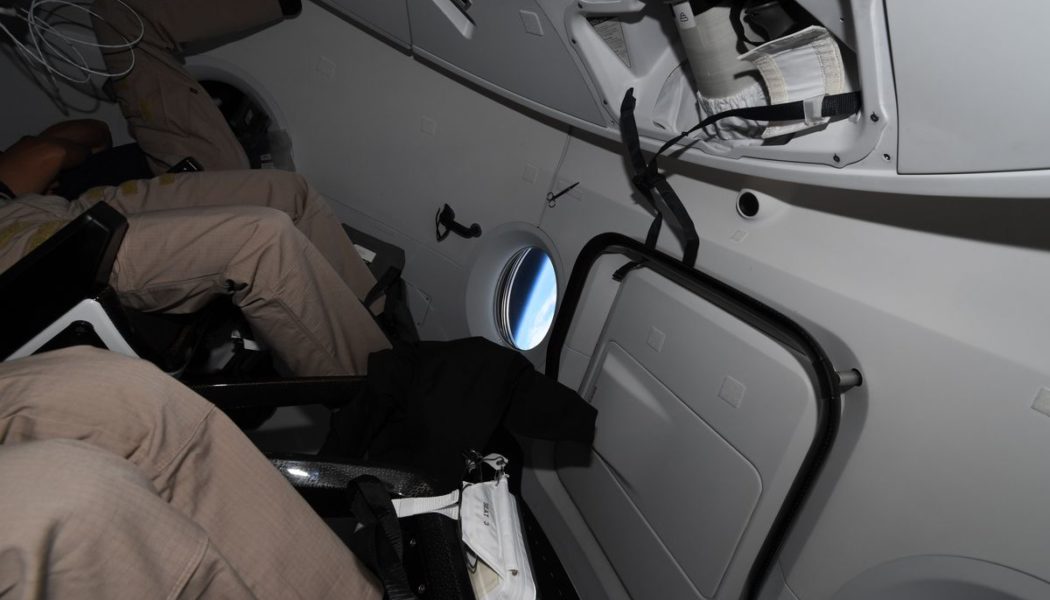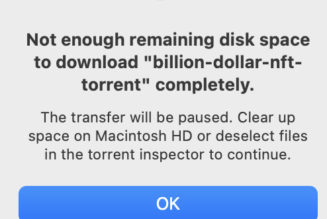SpaceX is launching another crew to space this weekend, sending four astronauts to the International Space Station for a six-month-long stay in orbit. Traveling inside SpaceX’s Crew Dragon spacecraft, the crew will get an early start on their mission, with liftoff scheduled for 2:21AM ET on October 31st out of Cape Canaveral, Florida.
The mission is called Crew-3, and it will carry NASA astronauts Thomas Marshburn, Raja Chari, and Kayla Barron, as well as European Space Agency astronaut Matthias Maurer. This will be the first trip to space for Maurer, Barron, and Chari — the mission’s commander. For Marshburn, this will be his third flight to space, and for each of his missions, he’s flown on a different vehicle. His first flight was on the Space Shuttle and his second flight was on Russia’s Soyuz spacecraft. Now he’ll get to experience the Crew Dragon, which the astronauts have nicknamed “Endurance.”
Crew-3 is SpaceX’s third operational crewed flight for NASA as part of the space agency’s Commercial Crew Program — an initiative to use private vehicles to ferry NASA astronauts to and from the International Space Station. As part of its initial contract with NASA, SpaceX is slated to perform up to six crewed flights for the agency, with two flights tentatively scheduled for next year. However, NASA recently indicated it is already thinking of how to transport astronauts beyond those initial missions.
While this is SpaceX’s third operational mission, it’s actually the company’s fifth time launching people to orbit on the company’s Crew Dragon spacecraft. In order to prove the Crew Dragon’s safety for NASA, SpaceX launched two NASA astronauts to the ISS in May 2020. That first successful test flight paved the way for SpaceX to start doing routine flights with Crew Dragon.
And in September, SpaceX launched a crewed flight called Inspiration4 that carried four non-NASA astronauts to orbit. Touted as an all-civilian crew, the passengers included a tech billionaire — who paid for the trip — a childhood cancer survivor, a professor, and an engineer. The foursome, who stayed in orbit for just three days, used the launch as a way to raise charity for St. Jude’s Children’s Hospital. It was SpaceX’s first truly private human spaceflight mission.
Though Inspiration4 wasn’t a NASA mission, SpaceX learned a few things from that flight that will help with the upcoming Crew-3 trip.
A NUMBER ONE PROBLEM
The Crew Dragon that flew the Inspiration4 flight operated pretty smoothly, except for one key element inside the spacecraft: the toilet. This week, SpaceX revealed that a tube in the toilet that transports urine into a storage tank came unglued. This caused urine to spray into the toilet’s fan system instead and pool under the floor. It wasn’t really a problem during the flight itself.
“We didn’t really even notice it; the crew didn’t notice it until we got back,” William Gerstenmaier, vice president of build and flight reliability at SpaceX, said during a press conference ahead of flight. “We got the vehicle back, we looked under the floor, and we saw the fact that there was contamination underneath the floor.”
After seeing this, SpaceX worried that the same problem might be happening on the Crew Dragon used for Crew-2, which is currently docked with the International Space Station. Sure enough, the astronauts on the space station went inside that Crew Dragon and found similar urine contamination under the floor of the toilet.
:no_upscale()/cdn.vox-cdn.com/uploads/chorus_asset/file/22966250/51137531971_c3db77a39c_o.jpg)
The main concern with this pooling is that it’s not just urine collecting under the floor; SpaceX adds a compound to the urine called Oxone, which removes the ammonia from the liquid to help get rid of odor and prevent bacteria from growing. But SpaceX became worried that the mixture of Oxone and urine in the floor could actually corrode the spacecraft itself. The company did tests that involved combining the urine and Oxone mixture with aluminum — the primary metal used to make Crew Dragon — inside a chamber that simulated the same temperature and humidity on board the spacecraft.
The toilet issue was more of a problem on Inspiration4, since the crew spent their entire mission inside Crew Dragon, using the bathroom for multiple days, leading to more potential corrosion. Most of SpaceX’s other Crew Dragon missions send people straight to the International Space Station, so astronauts are typically only using the toilet before docking. Also SpaceX claims that the aluminum alloy it uses on Crew Dragon is “very insensitive” to corrosion.
SpaceX opted to fix the toilet issue anyway by making the toilet an “all-welded structure” so that there are no longer any parts or tubes that can come unglued. That way no unwanted liquids will cause any trouble again.
A SIX-MONTH STAY
Crew-3 is set to take off from SpaceX’s launch site LC-39A at Kennedy Space Center. The crew will then spend a little less than a full day in orbit before rendezvousing with the International Space Station. Crew Dragon is designed to dock autonomously with the ISS, but the astronauts can jump in during the process if necessary.
:no_upscale()/cdn.vox-cdn.com/uploads/chorus_asset/file/22966270/51634067771_6e46bf9d92_o.jpg)
Once Crew-3 arrives, there will be a changing of the guard. The four Crew-2 astronauts already on board the space station will greet the incoming astronauts and get them settled. Then in mid-November, the Crew-2 members will climb into their own Crew Dragon and return back to Earth.
As for the Crew-3 astronauts, they’ll be on board the ISS for six months, scheduled to come back sometime in the spring of next year.
WHAT TIME IS SPACEX’S CREW-3 LAUNCH?
SpaceX’s Falcon 9 rocket will take off on Sunday, October 31st, from NASA’s Kennedy Space Center in Cape Canaveral, Florida.
Scheduled launch time: New York: 2:21AM / San Francisco: 11:21PM / London: 7:21AM / Berlin: 8:21AM / Moscow: 9:21AM / New Delhi: 11:51AM / Beijing: 2:21PM / Tokyo: 3:21PM / Melbourne: 5:21PM
HOW TO WATCH SPACEX’S CREW DRAGON LAUNCH LIVE:
Livestream: NASA’s livestream coverage can be found on YouTube and on the agency’s website.









